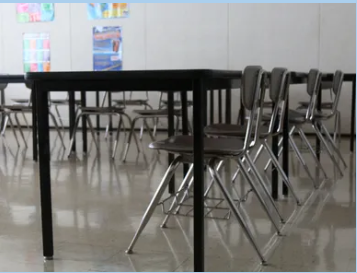
What Is Fixed Asset Depreciation?
Fixed assets are company assets that have an expected useful life of more than one year, such as buildings, office equipment, or machinery. Over time, these items depreciate in value until they have been reduced to their minimum resale value (“salvage value”).
Because you can use these assets over a few years, you can also spread out their expense over a few years. This maximizes your ability to save money on taxes and plan for your next asset purchases. It also helps you understand the true value of your company’s property.
What Is Fixed Asset Depreciation?
To understand depreciation as simply as possible, you can think of it like this:
Depreciation is an accounting practice that spreads the loss of value for each of your assets over multiple accounting periods. This limits your tax burden and company losses for each accounting period.
Depreciation occurs when your fixed assets decline in value, due to normal wear and tear or obsolescence. Since it is possible to reasonably estimate how long an asset will be useful to your organization (known as its “economic life”), you can use fixed asset depreciation to avoid over- or underestimating the value of your company’s assets.
In other words, depreciation helps you understand how much of an asset’s value has been used up over time, which helps you plan for and stay on top of new purchases to ensure seamless organization efficiency.
Knowing the true value of your assets creates a trickle-down effect on the rest of your expenses too because it helps you right-size related expenses like insurance premiums and property tax payments. Accurate depreciation also ensures that your P&Ls and Balance Sheets are accurate and up to date.
The Importance of Tracking Fixed Assets
Sometimes fixed assets are stolen or broken, which leads to “ghost” or “zombie” assets on your books. These are assets that you are deducting incrementally each year as expected (and potentially paying related expenses on), which you should be deducting all the remaining value for in the current period. Though it would be hard for someone to walk off with a forklift or building, someone can easily take a computer, iPad, acetylene torch, toolbox, or chair from your organization.
Sadly, people do take these items regularly – and that is why tracking your assets is important. You want to know what you have, so you do not end up paying extra taxes or insurance premiums for assets you have to replace.
How to Calculate Depreciation
Since there are a lot of types of assets and a lot of ways to use them, there are also a lot of ways to calculate depreciation. Since depreciation impacts your P&Ls and Balance Sheets, but not your Cash Flow, it’s worth it to see which depreciation methods will work best across a variety of scenarios.
No matter which type of depreciation method you use, your company will still calculate the same depreciation amount – the difference between each method lies in the timing. You can change when you deduct your costs for each asset, which helps you maximize your tax savings and plan for new asset investments.
Some common fixed asset depreciation methods include:
Straight-line depreciation
This is the most basic version of depreciation, in which you pay equal annual installments until the entire asset is depreciated to its salvage value. The benefit of using this method is that it sure is easy.
Example: A computer costs $3,000.00 and has a salvage value of $300.00 after 4 years. You would subtract the salvage value from the acquisition value and divide the remainder equally by 4 years. (3000 – 300) / 4 = $675.00 depreciated each year.
Declining balance depreciation
This is an accelerated depreciation method, in which you expense the asset higher in the early years of its useful life, so your depreciation amount is lower in the asset’s later years. The benefit of this method is that it lowers your tax bill in earlier years, so you can build up cash reserves.
Example: A computer costs $3,000.00 and has a salvage value of $300.00 after 4 years. You would subtract the salvage value from the acquisition value and divide the remainder over 4 years, charging more at the beginning.
Year Calculation Depreciation Accumulated Depreciation Net Book Value
Year 1 (3,000-300) x 0.38 1,026 1,026 1,974
Year 2 (3,000-300) x 0.38 1,026 2,052 948
Year 3 (3,000-300) x 0.12 324 2,376 624
Year 4 (3,000-300) x 0.12 324 2,700 300
Double-declining balance depreciation
This is also an accelerated fixed asset depreciation method. In this one, you multiply your regular depreciation method by 2x, so you pay much less tax in the asset’s early life. This results in an even lower tax bill in the asset’s early years.
Example: This would look like the previous example, except that you would be depreciating 50% in the first two years.
The Easy Way to Handle Fixed Asset Depreciation
Are you confused now (and a little worried)? You’re not alone.
For most people, manually performing depreciations is frustrating and complicated. The process takes a lot of time and leaves a lot of room for error. Even the administrative tasks required to manage a small number of fixed assets can overwhelm an organization quickly. This can result in costly errors that impact your books for years.